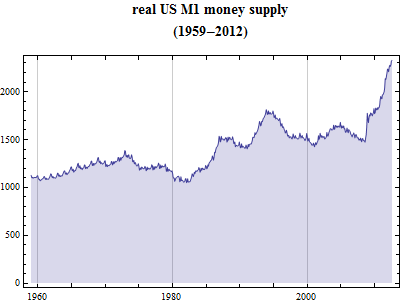Mar27
Slutsky Compensated Demand Curve With Diagram Theorem and Derivation of Demand Curve Web Notes @ abhipedia Powered by ABHIMANU IAS
Comentarios desactivados en Slutsky Compensated Demand Curve With Diagram Theorem and Derivation of Demand Curve Web Notes @ abhipedia Powered by ABHIMANU IAS
Contents
Thus in case of normal goods a fall in price of a commodity leads to the increase in quantity demanded due to both the substitution effect and income effect. First we explain the derivation of the Marshallian uncompensated demand curve. Suppose the initial equilibrium of the consumer is at point R where the budget line PQ is tangent to the indifference curve I1, and OA of good X is bought by the consumer in the tipper diagram. There are some inferior commodities known as Giffen goods that have a strong negative income effect to outweigh the substitution effect.

The consumer will be satisfied at any point along the curve assuming that other things are constant. ‘Price effect is the combination of income and substitution effects.’ https://1investing.in/ Describe. Price Effect for inferior goodsIn fig, The X-axis shows the quantity of inferior Commodity-1 and the Y-axis shows the quantity of Commodity-2.
The upper portion of the figure shows the substitution effects of the Hicks and Slutsky analyses and the combined price effect. There is a change in the real income of the consumer, leading to a change in the consumption of commodities. This curve shows that with the fall in the price of good X from P to P1its demand increases from OA to OB. At S, the consumer is buying OK of X and O W of Y; MK of X has been substituted for AW of Y. Therefore, Slutsky substitution effect on X is the increase in its quantity purchased by MK and Slutsky substitution effect on Y is the decrease in its quantity purchased by NW. An inferior good is a type of good whose demand declines when income rises.
What is the Price Effect?
In obtaining Slutsky substitution effect, income of the consumer is adjusted to keep his purchasing power (i. e. real income) constant so that he could buy the original combination of goods if he so desires. On the other hand, in the Hicksian substitution effect, with a change in price of a good money income with the consumer is so adjusted that his satisfaction remains constant. Thus the analysis which is based upon the compensating variation is a resolution of the price change into two fundamental economic ‘directions’, we shall not encounter a more fundamental distinction upon any other route. But Slutsky method has a distinct advantage in that it is easier to find out the amount of income equal to the ‘cost difference’ by which income of the consumer is to be adjusted. On the other hand, it is not so easy to know the compensating variation in income.
Here, the consumer will move from the equilibrium point D to the new equilibrium point at E on the original indifference curve IC. It implies that the consumer is preferring the more inferior commodity-1 with a fall in price. Thus, the movement of equilibrium points from D to E reflects the substitution effect. We have graphically shown above how the effect of change in price of a good can be broken up into its two component parts, namely, substitution effect and income effect. The decomposition of price effect into its two components can be derived and expressed mathematically. From the above analysis it is clear that whereas Hicks-Allen substitution effect takes place on the same indifference curve, Slutsky substitution effect involves the movement from one indifference curve to another curve, a higher one.
It may be pointed out here again that, unlike the Hicksian method, Slutsky substitution effect causes movement from a lower indifference curve to a higher one. While separately discussing substitution effect above, we pointed out the merits and demerits of the Hicksian and Slutskian methods of breaking up the price effect. As explained above, the cost difference is equal to AP.Q where AP stands for the change in price of a good and Q stands for the quantity of commodity he was consuming prior to the change in price. A perusal of the compensated demand curve D1of Hicks and D2of Slutsky shows that the curve D2is more elastic than D1.This is because the total expenditure on the purchase of good X is greater in the Slutsky approach than in the Hicks approach. While the conventional demand curves D3is more elastic than even the Slutsky demand curve D2.
Since Slutsky substitution effect has an important empirical and practical use, we explain below Slutsky’s version of substitution effect in some detail. Verico aims to sell 1 Lakh smartphones in India this quarterThe products the company has lined up to launch here include both affordable and higher-end smartphones, priced from Rs 7,000 toRs 25,000. Improving business climate, education projects to aid PC market in 2015On the consumer PC market, Kumar said the segment stood at 4.9 million units in 2014, with year-on-year growth of 1.7 per cent over 2013. The lowering of official exchange rate between one country’s currency….
What is ‘Indifference Curve’
As a result of this fall in price of X, the price line will shift to PL’ and the real income or the purchasing power of the consumer will increase. Now, in order to find out the Slutsky substitution effect, consumer’s money income must be reduced by the cost- difference or, in other words, by the amount which will leave him to be just able to purchase the old combination Q, if he so desires. In case X is an inferior good, the ordinary demand curve will slope downward but will be elastic than the compensated demand curves D1and D2because the substitution effect is stronger than the income effect in the case of the ordinary demand curve. But if X happens to be a Giffen good, the ordinary demand curve will slope from left to right upward i.e. it will have a positive slope because the income effect is stronger than the substitution effect.
Therefore, the consumer will now be in equilibrium at a point S on a higher indifference curve IC2. This movement from Q to S represents Slutsky substitution effect according to which the consumer moves not on the same indifference curve, but from one indifference curve to another. The compensated demand curve shows the quantity of a good which a consumer would buy if he is income-compensated for a change in the price of that good. In other words, the compensated demand curve for a good is a curve that shows how much quantity would be purchased at the changed price by the consumer if the income effect is eliminated. The compensated demand curve can be explained in terms of both the Hicks and Slutsky approaches to the substitution effect. The two-storey Figure 45 illustrates the construction of the Hicks and Slutsky compensated demand curves and the uncompensated demand curve.
If with the fall in the price of Commodity-1, keeping the price of Commodity-2 unchanged, and there is no reduction in the real income of the consumer. The consumer equilibrium point shifts to F on higher indifference implying the less negative income effect. As we know, a huge portion of income is spent on the consumption of inferior goods, the quantity demanded will be reduced from OY to OZ. Thus, the budget line and equilibrium point shifts to AC and point F on a higher indifference curve IC2.This movement of equilibrium points from E to F reflects the income effect. If with the fall in the price of Commodity-1, keeping the price of Commodity-2 unchanged. Also, there is no reduction in the real income of the consumer.
This total rise in quantity XZ indicates the price effect. Thus, in the case of inferior goods, the negative income effect and substitution effect varies in the opposite direction, leads to an increase in the quantity demanded of the inferior commodity-1. It refers to the movement of equilibrium point from D to F. Here, the substitution effect increases the quantity from OX to OY whereas the income effect decreases the quantity from OY to OZ. If with the fall in the price of apple juice, keeping the price of mango juice unchanged, and there is no reduction in the real income of the consumer.
Movement from point Q to S is the result of Slutsky substitution effect; the effect due to the fall in purchasing power has been cancelled by giving him money equal to PG of Y or L” H of X. In this present case of stipulated rise in price of X, Slutsky substitution effect on X is the fall in its quantity bi ought by MK and Slutsky substitution effect an Y is the increase in its quantity brought by NW. The change in price results in the substitution of a relatively cheaper commodity for the relatively dearer one.
Hence, the direction of the movement of the substitution effect is certain i.e. negative. Since the compensated demand curve is based on the substitution effect of a change in the price of good X, we carry the above analysis further and derive the Hicks substitution effect. Let us take away the increase in the real income of the consumer due to the fall in the price of X equal to PM of good Y and Q1N of X good by drawing a compensated budget line MN parallel to the budget line PQ1. As a result, the total effect from a fall in the price of the commodity-1 indicated from budget lines AB to AC, the quantity demanded of the Giffen commodity decreased by XZ.

Thus the overall effect of change in price of the good X on its quantity demanded can be expressed by the following equation which is generally called Slutsky equation because it was Russian economist E. Slutsky who first of all divided the price effect into substitution effect and income effect. Thus, movement from Q to R as a result of price effect can be divided into two steps. First, movement from Q to S as a result of substitution effect and secondly, movement from S to R as a result of income effect.
Slutsky Compensated Demand Curve (With Diagram) Theorem and Derivation of Demand Curve
In other words, his money income must be increased to the extent which is just large enough to permit him to purchase the old combination Q, if he so desires, which he was buying before. For this, a budget line GH has been drawn which passes through point Q. It will be evident from the price effect is a combination of figure that, PG or L” H represents ‘cost difference’ in this case. With budget line GH he can buy if he so desires the combination Q, which he was buying at the previous price of X. Now suppose that price of X falls, price of Y and money income of the consumer remaining unchanged.
X) consumed becomes smaller and smaller, the income effect of the price change will becomes smaller and smaller. Thus, if the quantity consumed of a commodity is very small, then the income effect is not very significant. The above diagram shows the U indifference curve showing bundles of goods A and B. To the consumer, bundle A and B are the same as both of them give him the equal satisfaction. In other words, point A gives as much utility as point B to the individual.
- As the price of a commodity falls, the consumer’s real income increases, which leads to a rise in demand for that commodity.
- In the case of inferior goods, the consumers tend to buy less of a commodity with a rise in income.
- Now suppose that price of good X rises, price of Y remaining unchanged.
- If with the fall in the price of Commodity-1, keeping the price of Commodity-2 unchanged, and there is no reduction in the real income of the consumer.
- The two-storey Figure 45 illustrates the construction of the Hicks and Slutsky compensated demand curves and the uncompensated demand curve.
- In the case of the ordinary demand curve like D, both the substitution and income effects are in operation and they explain the downward slope of the curve.
The combination of these two effects is called the Price Effect. This combination represents the price-demand relationship in a better way. Price Effect as a combination explains the nature of the response in quantity purchased due to change in price. As a result of this he buys MN quantity of good X more than before.
Question: Price Effect is a combination of
The negative substitution effect outweighs the whole negative income effect. Therefore, the overall effect will be the increase in the quantity demanded of that commodity due to a fall in the price. As a result, the total effect from a fall in the price of apple juice indicated from budget lines AB to AC, the quantity demanded of apple juice increased by XZ. The movement of equilibrium point from D to F represents the increase in quantity demanded of apple juice from OX to OZ units. In most cases, the substitute effect and income effect move in the same direction.
Price Effect – Combination of Substitution and Income Effect:
As the price of a commodity falls, the consumer’s real income increases, which leads to a rise in demand for that commodity. But, for normal goods, Both these effects operate in the same direction. 1, prices of the two goods and his money income being given. Now suppose that price of good X rises, price of Y remaining unchanged. As a result of the rise in price of X, budget line will shift downward to PL” and consumer’s real income or purchasing power of his given money income will fall. Further, with this price change, good X has become relatively dearer and good Y relatively cheaper than before.
The difference between the two versions of the substitution effect arises solely due to the magnitude of money income by which income is reduced or increased to compensate for the change in income. The Hicksian approach just restores to the consumer his initial level of satisfaction, whereas the Slutsky approach “over-compensates” the consumer by putting him on a higher indifference curve. In order to find out Slutsky substitution effect in this present case, consumer’s money income must be increased by the ‘cost-difference’ created by the price change to compensate him for the rise in price of X.


Recent Comments